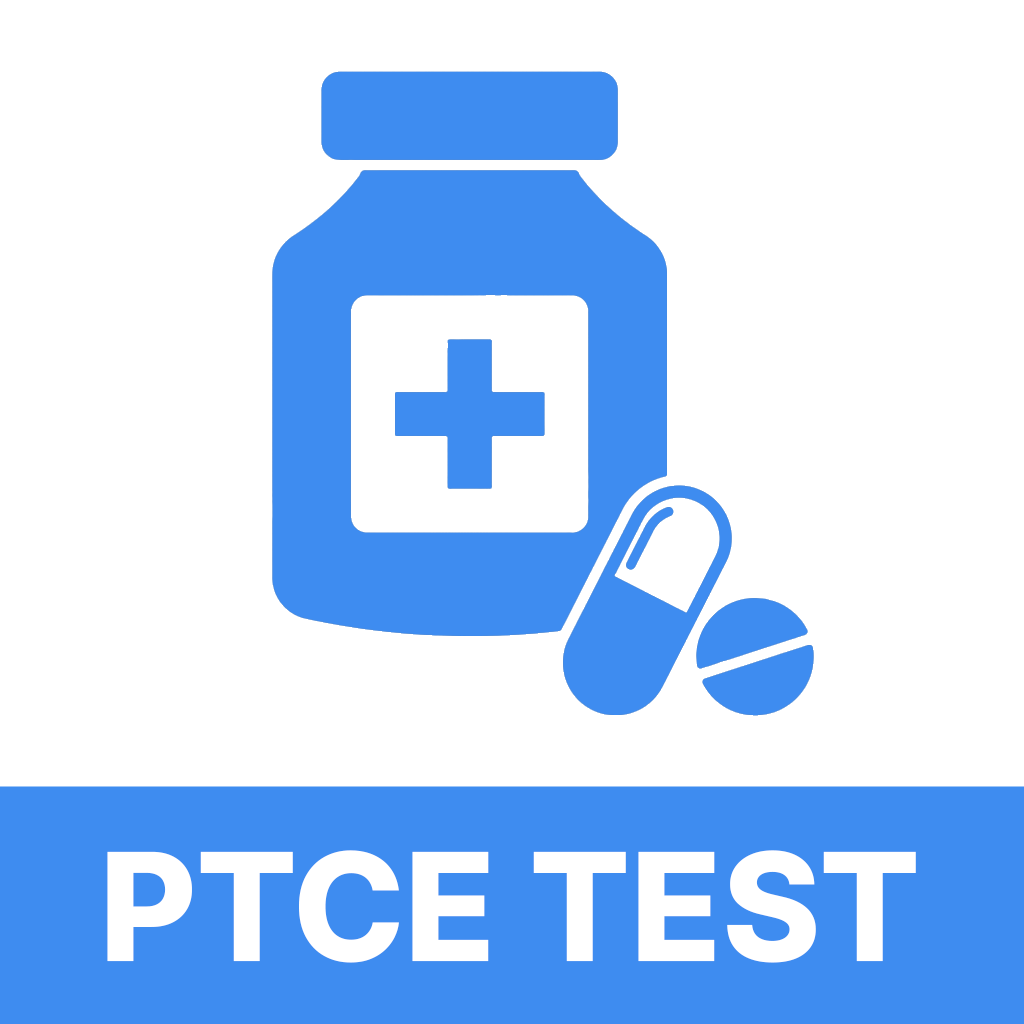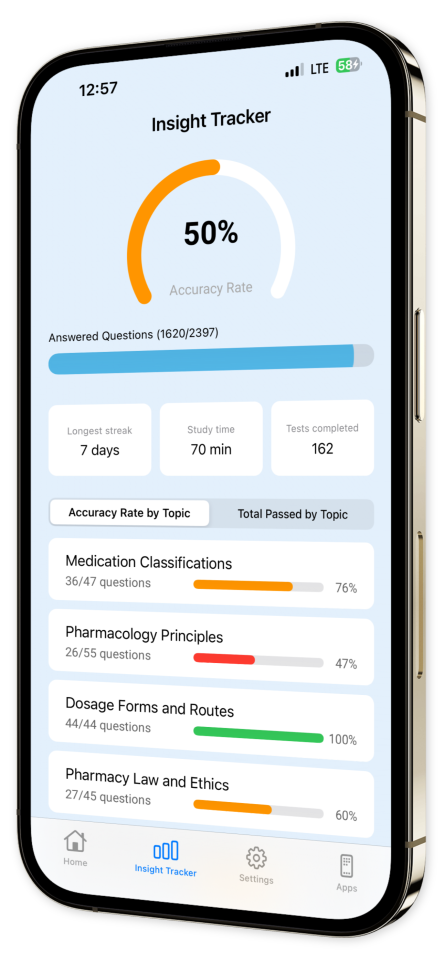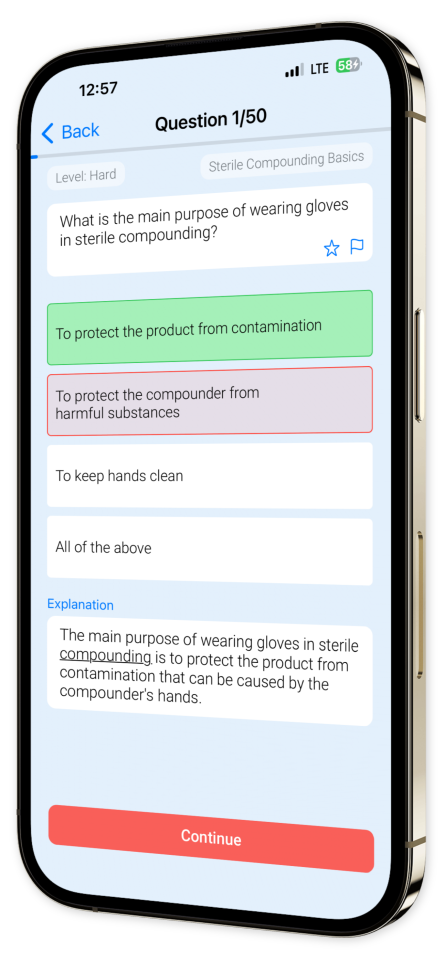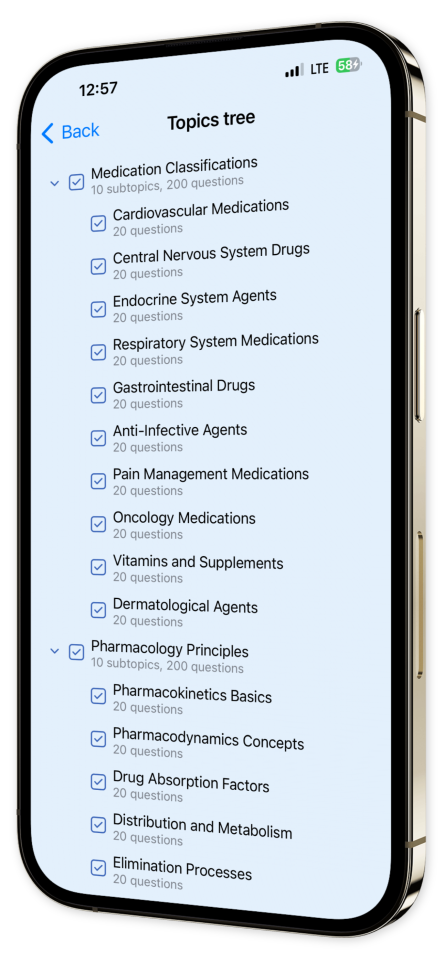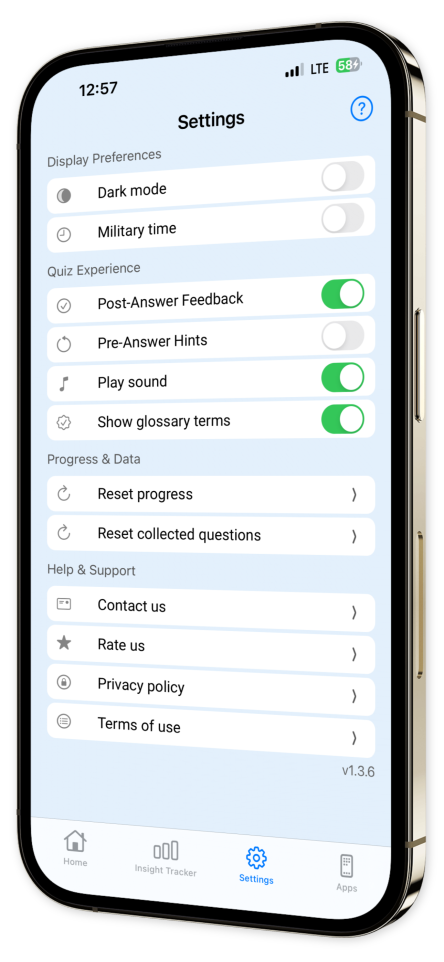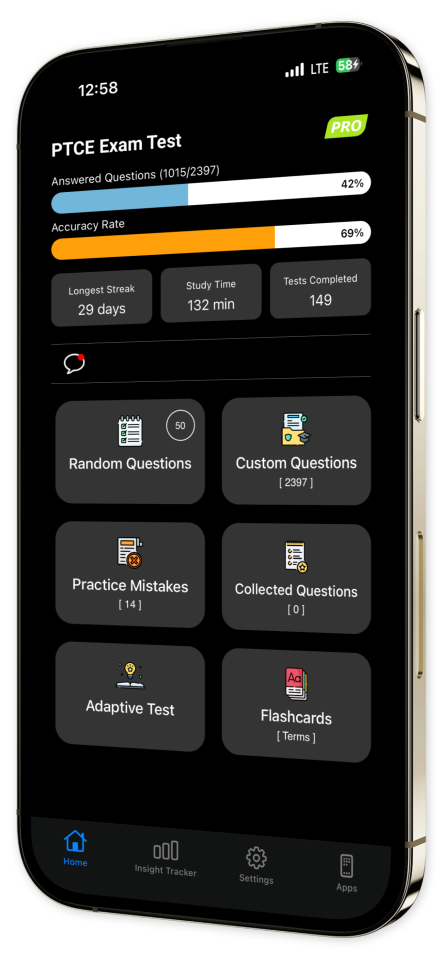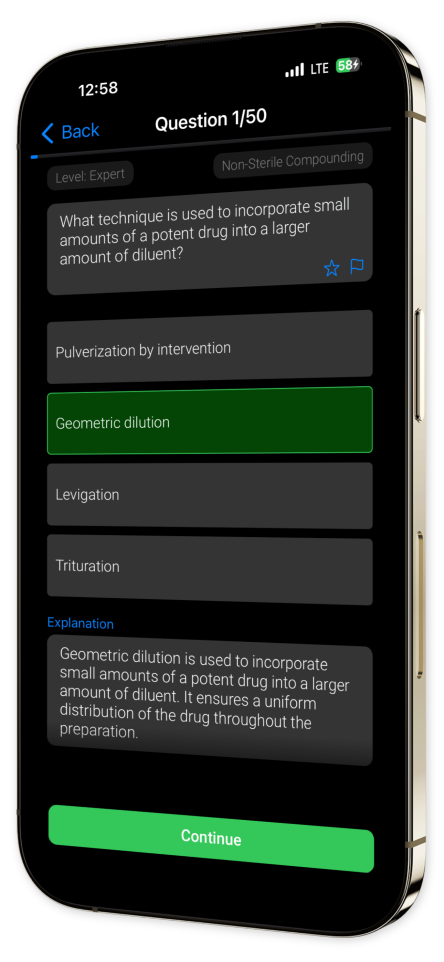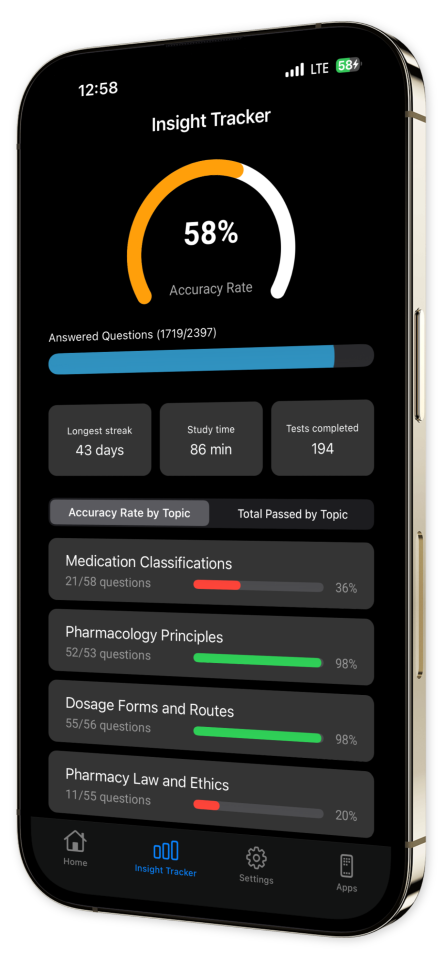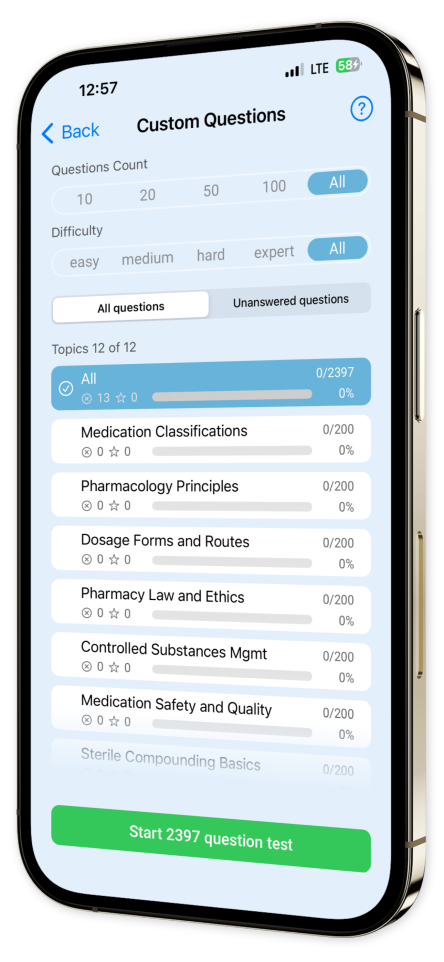
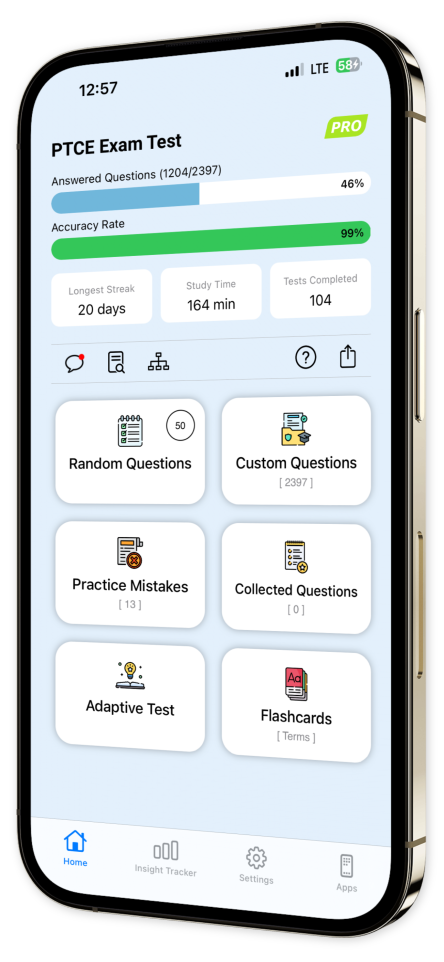
PTCE Exam Test iOS
Supercharge your pharmacy technician certification exam preparation with PTCE Exam Test!
Our app is meticulously crafted to provide you with a dynamic and thorough testing experience, ensuring you are well-equipped with the knowledge and skills needed to excel in the Pharmacy Technician Certification Exam (PTCE).
The extensive question bank spans all critical topics, giving you a comprehensive insight into the exam material. Each question comes with a detailed explanation, designed to deepen your comprehension and enhance retention for a successful exam outcome.
Key Features:
Extensive Question Bank: Dive into a vast array of practice questions covering every essential topic. This ensures no stone is left unturned in your exam preparation.
In-Depth Explanations: Each question is accompanied by detailed explanations, offering you insights and understanding necessary for mastering complex concepts effectively.
Customizable Quizzes: Tailor your study sessions according to your unique needs. Design quizzes based on specific topics or question types, allowing you to concentrate on areas that require the most focus.
Progress Tracking: Our intuitive progress tracking features enable you to monitor your advancement over time, identifying strengths and pinpointing areas for improvement.
Offline Access: Benefit from the flexibility of studying anytime and anywhere. With offline access, you can prepare for the PTCE even when you're on the go and without an internet connection.
User-Friendly Interface: Experience an app layout that's clean, intuitive, and user-centric. The streamlined design keeps you focused on what's most important—preparing for your certification exam.
Download PTCE Exam Test today and step into a more effective and efficient way to prepare for your Pharmacy Technician Certification Exam. Elevate your learning, master the material, and move one step closer to certification success with PTCE Exam Test. Join the community of successful candidates and see the difference an expertly designed study tool can make in your exam performance!
Content Overview
Explore a variety of topics covered in the app.
Example questions
Let's look at some sample questions
Tretinoin is most commonly used in the treatment of which condition?
AcnePsoriasisEczemaRosacea
Tretinoin, a form of vitamin A, is most commonly used in the treatment of acne. It is not typically used for psoriasis, eczema, or rosacea.
Under the HIPAA Privacy Rule, when can a healthcare provider use or disclose a patient's health information without the patient's written authorization?
For treatment, payment, and healthcare operationsFor marketing purposesFor selling patient informationNone of the above
Under the HIPAA Privacy Rule, a healthcare provider can use or disclose a patient's health information without the patient's written authorization for treatment, payment, and healthcare operations.
Which of the following is NOT considered a hazardous drug?
CisplatinMethotrexateAspirinCyclophosphamide
Aspirin is not classified as a hazardous drug. Cisplatin, Methotrexate, and Cyclophosphamide are all examples of hazardous drugs due to their potential to cause harm to healthcare workers who are exposed to them.
If a prescription calls for a 2% w/w hydrocortisone cream and you have 100g of base, how many grams of hydrocortisone will you need?
0.02g2g20g200g
For a 2% w/w (weight/weight) preparation, you will need 2% of the total weight as the active ingredient. So for 100g of base, you will need 2g of hydrocortisone.
What information is required when transferring a prescription?
Only the prescription numberOnly the patient's nameOnly the name of the medicationThe prescription number, the patient's name, and the name of the medication
When transferring a prescription, the prescription number, the patient's name, and the name of the medication are required. This information is necessary to ensure the correct prescription is transferred for the correct patient.
What is the primary goal of patient counseling in a pharmacy setting?
To sell more productsTo ensure the patient understands their medication and how to use itTo make the patient feel better emotionallyTo diagnose the patient's illness
The main goal of patient counseling in a pharmacy setting is to ensure that the patient understands their medication, how to take it, what it does, and any potential side effects or interactions. This helps to improve medication adherence and patient outcomes.
A prescription calls for 250 mg of a medication. The medication is available as 100 mg per 5 mL. How many mL should be dispensed?
12.5 mL25 mL2.5 mL50 mL
To find the volume to be dispensed, you need to set up a proportion: 100 mg is to 5 mL as 250 mg is to X mL. Solving for X gives you 12.5 mL.
A prescription calls for a medication to be reconstituted to a concentration of 250 mg/5 mL. The vial contains 1 g of the medication. How many milliliters of diluent should be added?
20 mL15 mL25 mL30 mL
The vial contains 1 g of medication, which is equal to 1000 mg. The required concentration is 250 mg/5 mL, which means that 1000 mg will require 20 mL of diluent.
A patient is prescribed to take 1 capsule three times a day from a bottle of 90 capsules. What is the day's supply?
30 days45 days60 days90 days
The patient is taking 1 capsule three times a day, which totals 3 capsules per day. Therefore, the day's supply will be total capsules/daily dose = 90 capsules / 3 capsules/day = 30 days.
Which of the following is NOT a benefit of using a computerized inventory control system in a pharmacy?
Reduced likelihood of human errorIncreased speed of inventory management tasksAbility to handle high volumes of inventoryIncreased customer satisfaction due to faster service
While a computerized inventory control system can help improve efficiency and accuracy, it does not directly lead to increased customer satisfaction due to faster service. However, it can indirectly contribute to this by ensuring that items are in stock and available when needed.
